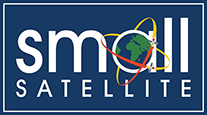Session
Session VI: Advanced Technology 3-Enterprise
Location
Salt Palace Convention Center, Salt Lake City, UT
Abstract
ASTRA is an on-orbit technology demonstrator establishing a new paradigm for implementing on-board “thinking.” ASTRA is a system-level autonomy capability (including digital twins, anomaly detection, diagnostics/prognostics, and mission management) enabled by an innovative technology, NPAS - NASA Platform for Autonomous Systems. NPAS is developed by NASA Stennis Space Center (SSC) Autonomous Systems Laboratory (ASL) with support from NASA Exploration Systems Development Mission Directorate (ESDMD) Advanced Exploration Systems and Mars Campaign Office. ASTRA leverages NPAS for on-board “thinking” autonomy. ASTRA also includes advanced hardware required for implementing autonomy. ASTRA Flight Software (FS) is running on commercial hardware that provides the computational and memory resources required for on-board autonomous behavior and operations. ASTRA’s autonomy capability was successfully validated as a hosted payload operating on-board LizzieSat-1 (LS-1), a commercial satellite designed, built, and operated by Sidus Space. LS-1 successfully launched into a 97.4°, 510km orbit in March 2024. LS-1 satellite avionics include three on-board processors: an SP0 processor running LS-1 flight software implemented in Core Flight Software (cFS) and two NVIDIA General-Purpose Computing Graphics Processing Units (GPGPUs) running Linux. One GPGPU manages multiple Sidus payloads. The second GPGPU is dedicated to NASA SSC’s ASTRA.
ASTRA’s implementation is containerized and demonstrates a hierarchical distributed autonomy architecture. ASTRA FS includes two autonomous system managers that coordinate work to achieve mission objectives: a Vehicle System Manager (VSM) and an Electrical Power System (EPS) manager. In this way, ASTRA is a uniquely configured payload that can operate LS-1 when enabled. Furthermore, software updates enable ASTRA to evolve. For example, ASTRA Flight Software (FS) version 1.0 includes core capabilities required to validate communication, command, and control. Then, ASTRA FS version 2.0 is intended to monitor and manage the LS-1 onboard EPS, including load-shedding non-essential power under low power generation conditions. ASTRA FS operations are coordinated with LS-1 using NPAS’ Software Bus Network (SBN) bridge (SBN bridge enables ASTRA FS integration with LS-1 cFS applications). SBN publish/subscribe capabilities enables transmission of telemetry from LS-1 systems (e.g. power) to ASTRA, as well enabling ASTRA commands to change satellite EPS onboard state. Data flow from LS-1 to ASTRA includes ground operations performed at the ASTRA ASL Payload Operations Command Center (POCC). LS-1 data is downlinked at least 16 times/day into Sidus leased commercial ground stations which automatically relay LS-1 data (including ASTRA data) via Amazon Web Service (AWS) commercial lines into Sidus Space Merritt Island, Florida Mission Command Center (MCC). ASTRA, in addition to validating successful autonomous operations, served as a testbed for NASA SSC’s ASL on-board the LS-1 satellite on-orbit. The ASTRA FS technology demonstrator on-orbit shows potential to enable development, test, and validate autonomous operations on-orbit (e.g. satellites, spacecraft) and autonomy capabilities required for future Moon-to-Mars missions.
Document Type
Event
ASTRA – Autonomous Satellite Technology for Resilient Applications: A Technology Demonstrator
Salt Palace Convention Center, Salt Lake City, UT
ASTRA is an on-orbit technology demonstrator establishing a new paradigm for implementing on-board “thinking.” ASTRA is a system-level autonomy capability (including digital twins, anomaly detection, diagnostics/prognostics, and mission management) enabled by an innovative technology, NPAS - NASA Platform for Autonomous Systems. NPAS is developed by NASA Stennis Space Center (SSC) Autonomous Systems Laboratory (ASL) with support from NASA Exploration Systems Development Mission Directorate (ESDMD) Advanced Exploration Systems and Mars Campaign Office. ASTRA leverages NPAS for on-board “thinking” autonomy. ASTRA also includes advanced hardware required for implementing autonomy. ASTRA Flight Software (FS) is running on commercial hardware that provides the computational and memory resources required for on-board autonomous behavior and operations. ASTRA’s autonomy capability was successfully validated as a hosted payload operating on-board LizzieSat-1 (LS-1), a commercial satellite designed, built, and operated by Sidus Space. LS-1 successfully launched into a 97.4°, 510km orbit in March 2024. LS-1 satellite avionics include three on-board processors: an SP0 processor running LS-1 flight software implemented in Core Flight Software (cFS) and two NVIDIA General-Purpose Computing Graphics Processing Units (GPGPUs) running Linux. One GPGPU manages multiple Sidus payloads. The second GPGPU is dedicated to NASA SSC’s ASTRA.
ASTRA’s implementation is containerized and demonstrates a hierarchical distributed autonomy architecture. ASTRA FS includes two autonomous system managers that coordinate work to achieve mission objectives: a Vehicle System Manager (VSM) and an Electrical Power System (EPS) manager. In this way, ASTRA is a uniquely configured payload that can operate LS-1 when enabled. Furthermore, software updates enable ASTRA to evolve. For example, ASTRA Flight Software (FS) version 1.0 includes core capabilities required to validate communication, command, and control. Then, ASTRA FS version 2.0 is intended to monitor and manage the LS-1 onboard EPS, including load-shedding non-essential power under low power generation conditions. ASTRA FS operations are coordinated with LS-1 using NPAS’ Software Bus Network (SBN) bridge (SBN bridge enables ASTRA FS integration with LS-1 cFS applications). SBN publish/subscribe capabilities enables transmission of telemetry from LS-1 systems (e.g. power) to ASTRA, as well enabling ASTRA commands to change satellite EPS onboard state. Data flow from LS-1 to ASTRA includes ground operations performed at the ASTRA ASL Payload Operations Command Center (POCC). LS-1 data is downlinked at least 16 times/day into Sidus leased commercial ground stations which automatically relay LS-1 data (including ASTRA data) via Amazon Web Service (AWS) commercial lines into Sidus Space Merritt Island, Florida Mission Command Center (MCC). ASTRA, in addition to validating successful autonomous operations, served as a testbed for NASA SSC’s ASL on-board the LS-1 satellite on-orbit. The ASTRA FS technology demonstrator on-orbit shows potential to enable development, test, and validate autonomous operations on-orbit (e.g. satellites, spacecraft) and autonomy capabilities required for future Moon-to-Mars missions.


